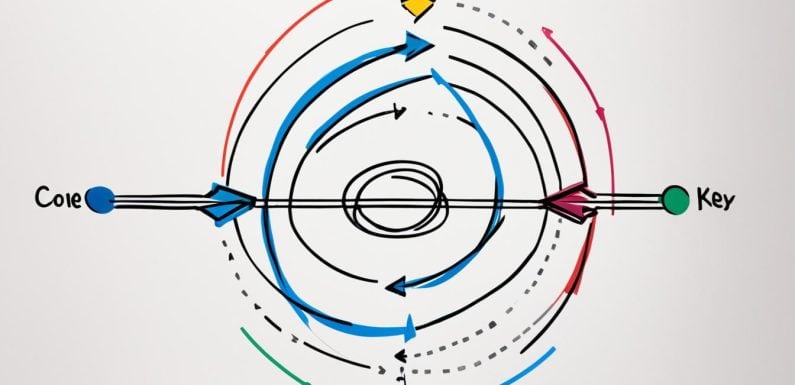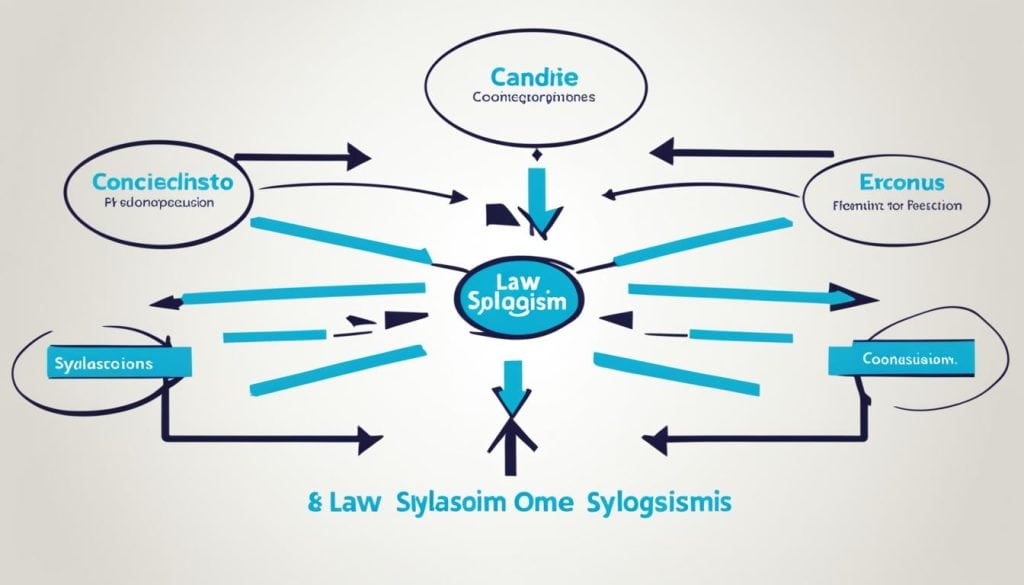
The Law of Syllogism stands as a critical component within the realm of deductive reasoning and logical framework. It is essentially the connective tissue that links individual conditional statements, each with its own hypothesis and conclusion, to arrive at a new and often enlightening conclusion. This logical principle is a foundational tool for rational thought, allowing us to construct clear and coherent arguments by synthesizing seemingly disparate premises.
Key Takeaways
- The Law of Syllogism is integral to the process of deductive reasoning.
- Conditional statements are the building blocks that the Law of Syllogism connects.
- This logical principle helps in forming stronger arguments and clearer conclusions.
- Understanding the Law of Syllogism is essential for logical and critical thinking.
- The application of this law extends beyond theoretical reasoning into practical decision making.
Understanding the Basics of the Law of Syllogism
The basics of the law of syllogism play a pivotal role in how we process and deduce information through deductive reasoning. To grasp this fundamental principle, we must first comprehend conditional statements, the building blocks of logical deduction. A conditional statement is expressed in the form “if p, then q,” where ‘p’ is a hypothesis and ‘q’ is a conclusion.
Central to deductive reasoning is the ability to link these conditional statements in a chain where the conclusion of one statement becomes the hypothesis of the next. This chaining creates a syllogistic linkage that leads to logically sound conclusions. Here’s an example for clarity:
- If it rains (p), the ground will be wet (q).
- If the ground is wet (p), you will need an umbrella (q).
Through the law of syllogism, we can connect these two statements to conclude that if it rains, you will need an umbrella. This, in essence, is the core functionality of the basics of law of syllogism.
| Conditional Statement #1 | Conditional Statement #2 | Resultant Syllogistic Conclusion |
|---|---|---|
| If a number is even (p), it is divisible by 2 (q). | If a number is divisible by 2 (p), it is not prime (q). | If a number is even, it is not prime (excluding the number 2). |
| If a plant receives sunlight (p), it photosynthesizes (q). | If a plant photosynthesizes (p), it generates oxygen (q). | If a plant receives sunlight, it generates oxygen. |
This fundamental tenet of deductive reasoning not only streamlines the pathways to conclusions but also ensures that logic remains intact every step of the way. Delving into the basics of the law of syllogism equips thinkers and learners with the ability to navigate complex conditional relationships with precision and confidence.
What is Law of Syllogism
The applications of the law of syllogism span beyond academia into various multifaceted scenarios, where problem solving and decision making are crucial. This logical principle is not confined within the realms of mathematics and science but also flourishes in the complexity of everyday decisions.

Real-World Applications of the Law of Syllogism
In real-world contexts, the applications of the law of syllogism facilitate the flow of logical reasoning in diverse fields. From constructing algorithms in computer science to formulating strategic plans in business, this fundamental notion transcends its theoretical roots and becomes a cornerstone in practical methodologies.
- Legal Reasoning: Lawyers use it to draw effectively reasoned conclusions in courtroom arguments.
- Medical Diagnostics: Doctors employ deductive reasoning to link symptoms and diagnose patients.
- Software Development: Programmers apply it to enhance logic in code and debug more efficiently.
Connection Between Law of Syllogism and Problem Solving
The connection between law of syllogism and problem solving is undeniable, especially when it comes to dissecting complex issues into more manageable parts. Utilizing deductive reasoning in problem solving is akin to solving puzzles — each piece is a conditional statement that, when accurately placed, completes the larger picture of the solution.
| Field | Problem | Role of Law of Syllogism |
|---|---|---|
| Mathematics | Proofs and Theorems | Aids in structuring arguments to arrive at logical solutions. |
| Science | Experimental Conclusions | Facilitates the formulation of hypotheses and interpretation of data. |
| Technology | System Design | Ensures coherent flow in processes and decision trees. |
Moreover, integrating the law of syllogism in decision making processes empowers individuals and organizations to navigate through daily challenges with precision and confidence. By comprehending and applying these logical constructs, we sharpen our cognitive abilities to make informed and well-reasoned decisions.
Exploring the Significance of the Law of Syllogism in Logic
The significance of the Law of Syllogism in logic cannot be understated. Rooted in the very discipline of deductive reasoning, this principle serves as a cornerstone for constructing valid arguments and understanding the logical flow of ideas. Deductive reasoning in logic relies on the ability to make compatible connections between various premises to arrive at a sound conclusion. Here lies the true essence of the Law of Syllogism – it equips us with a method to form these connections in a systematic and reliable manner. By applying this timeless principle, thinkers and scholars have been able to create complex, yet coherent, frameworks that stand the test of rigorous scrutiny.
The impact of the Law of Syllogism extends far beyond the purview of classical philosophy and into the realm of modern analytical thinking. From algorithm design in computer science to strategic planning in business, the deductive reasoning in logic facilitated by the Law of Syllogism is deeply embedded in our processes for decision-making and problem-solving. It fosters a structured approach to reasoning that not only assists in the clear articulation of arguments but also prevents logical fallacies that often lead to erroneous conclusions.
Moreover, understanding and applying the Law of Syllogism enhances our capacity to dissect and comprehend complex ideas. It is one of the foundational logical principles that promote critical thinking. Academically, it is essential in fields like mathematics and science, where logic is indispensable. In our daily interactions and personal decision-making, its subtleties guide us, often unconsciously, towards sound judgments based on a logical sequence of premises. Therefore, the Law of Syllogism is more than merely a facet of logic; it is a vital tool that shapes our intellectual and practical landscapes.
